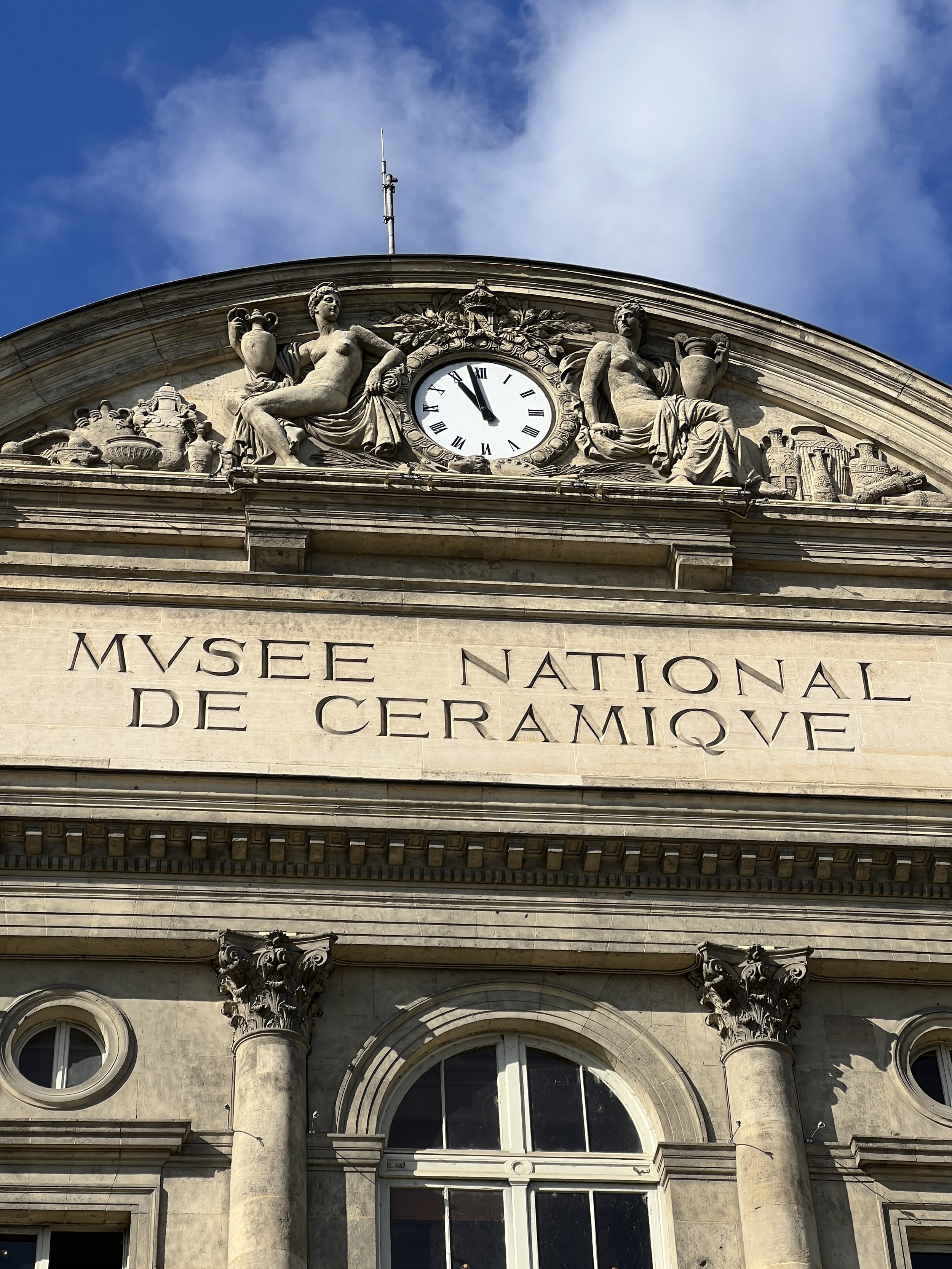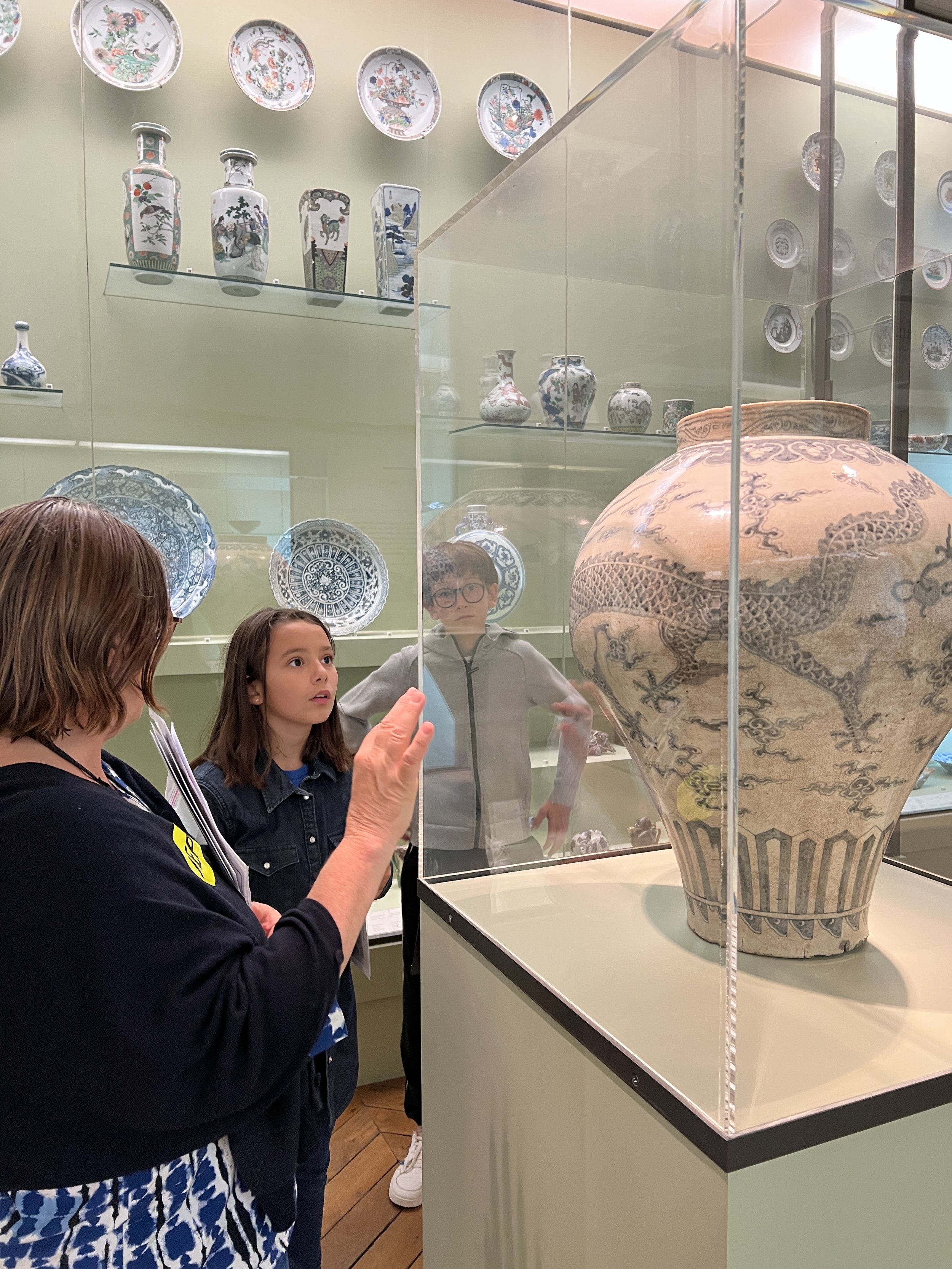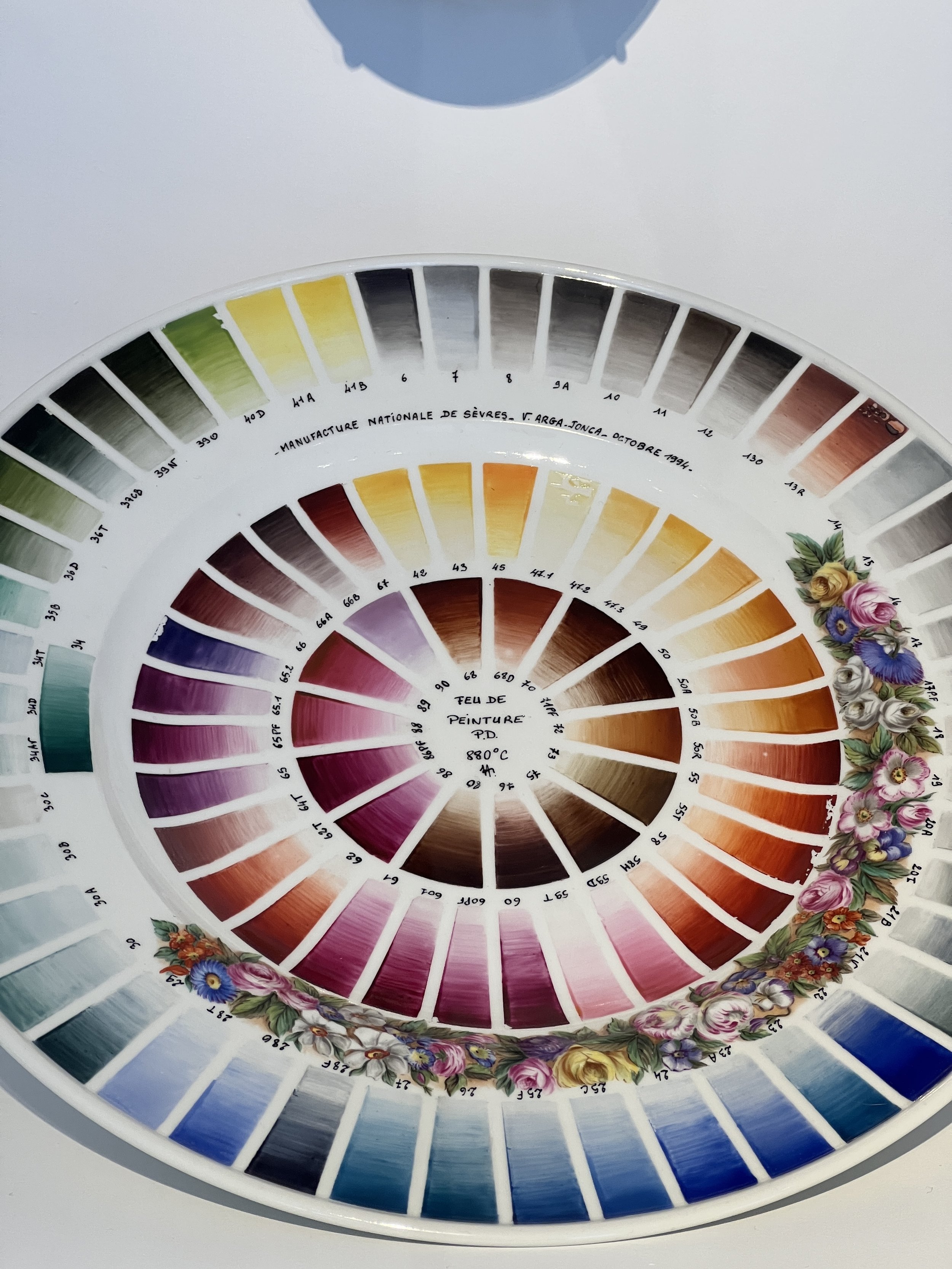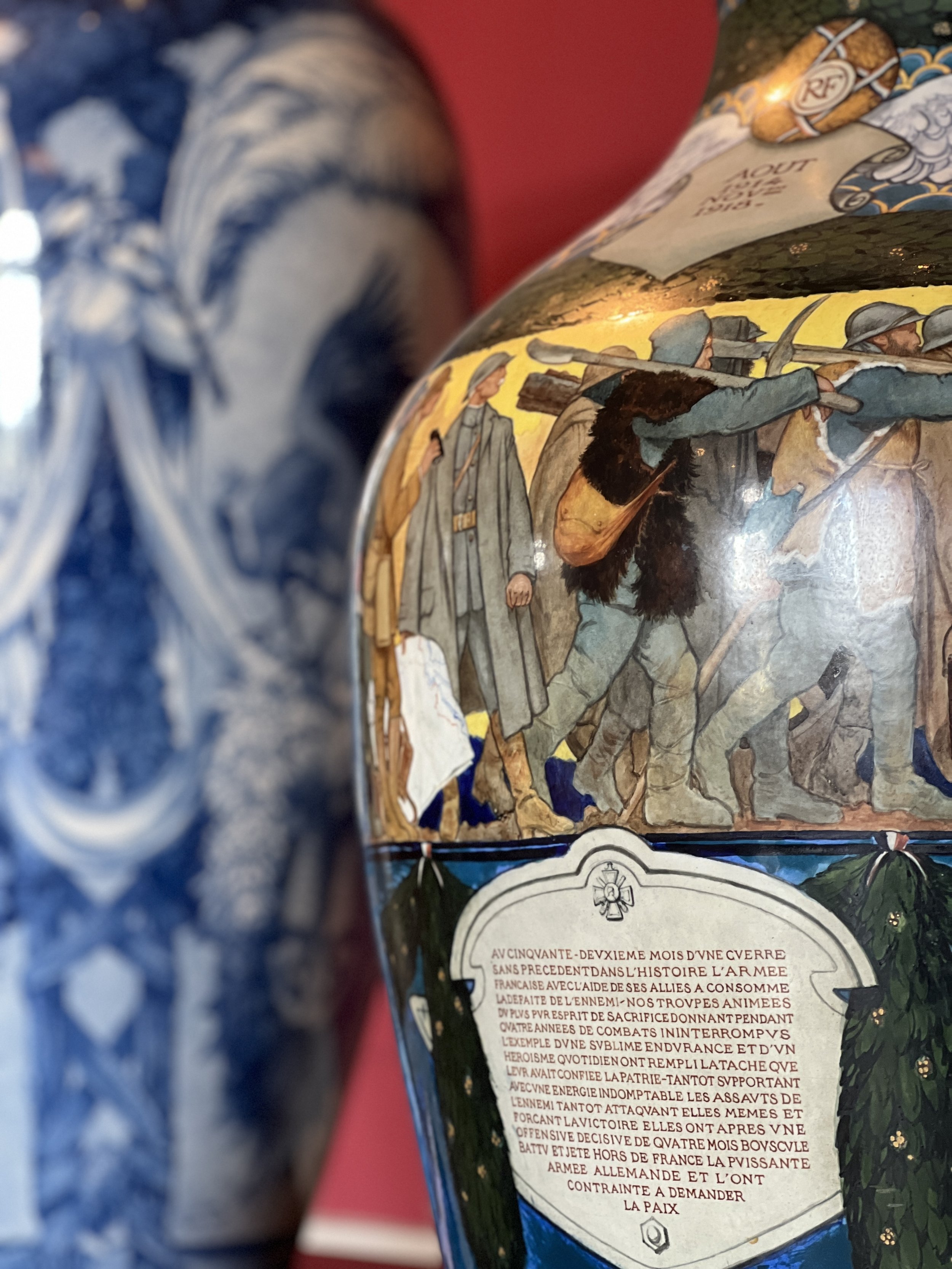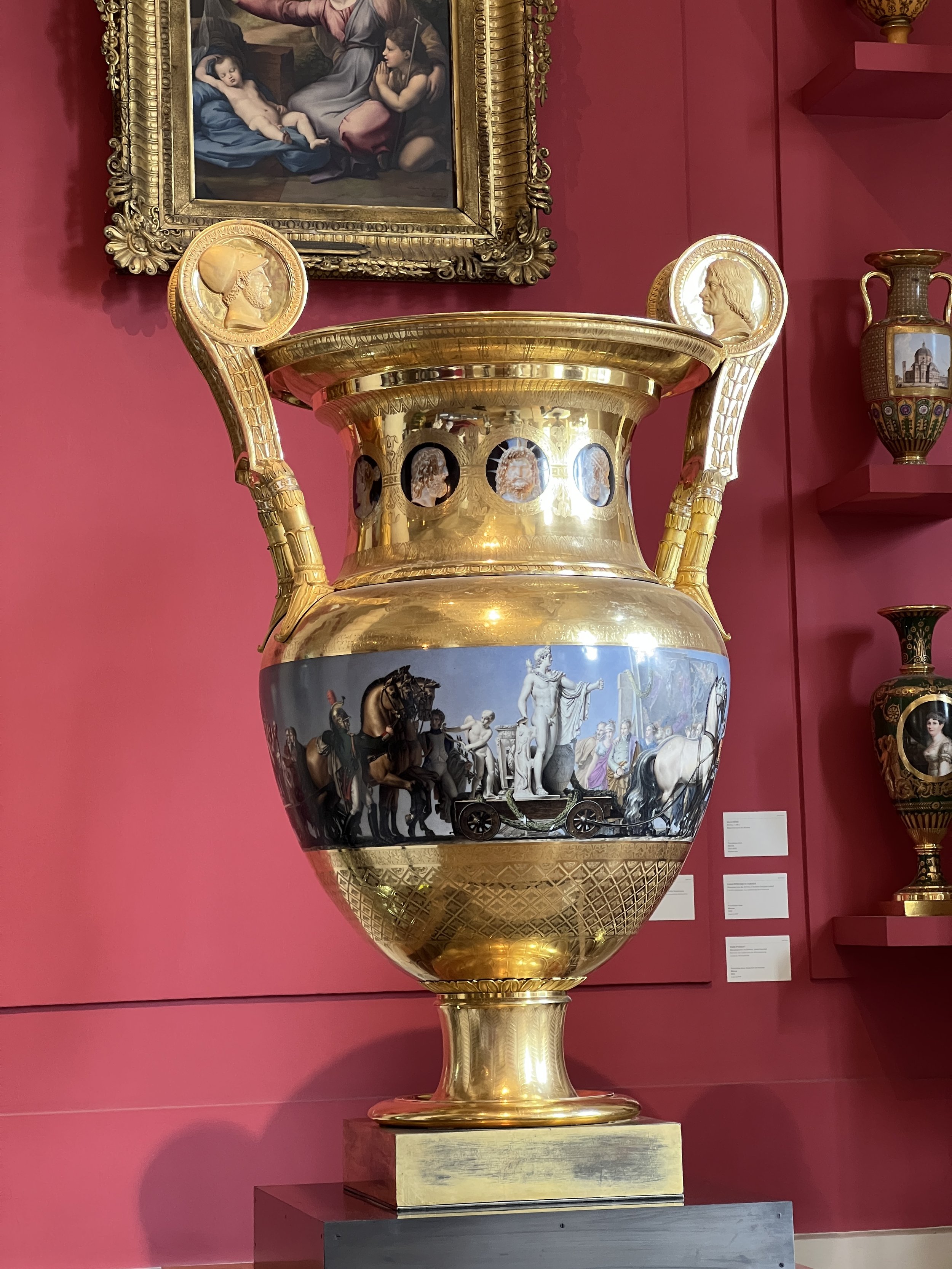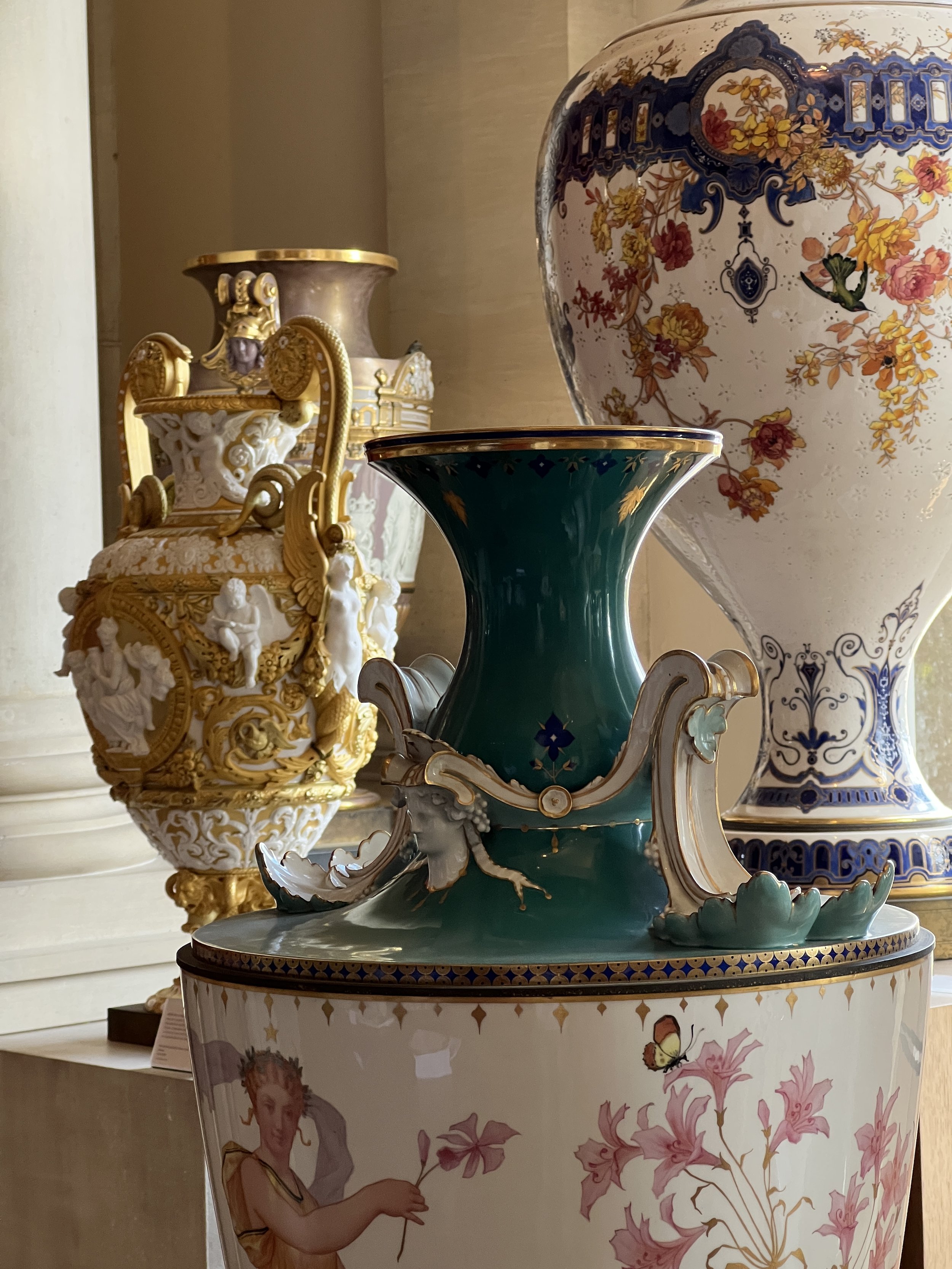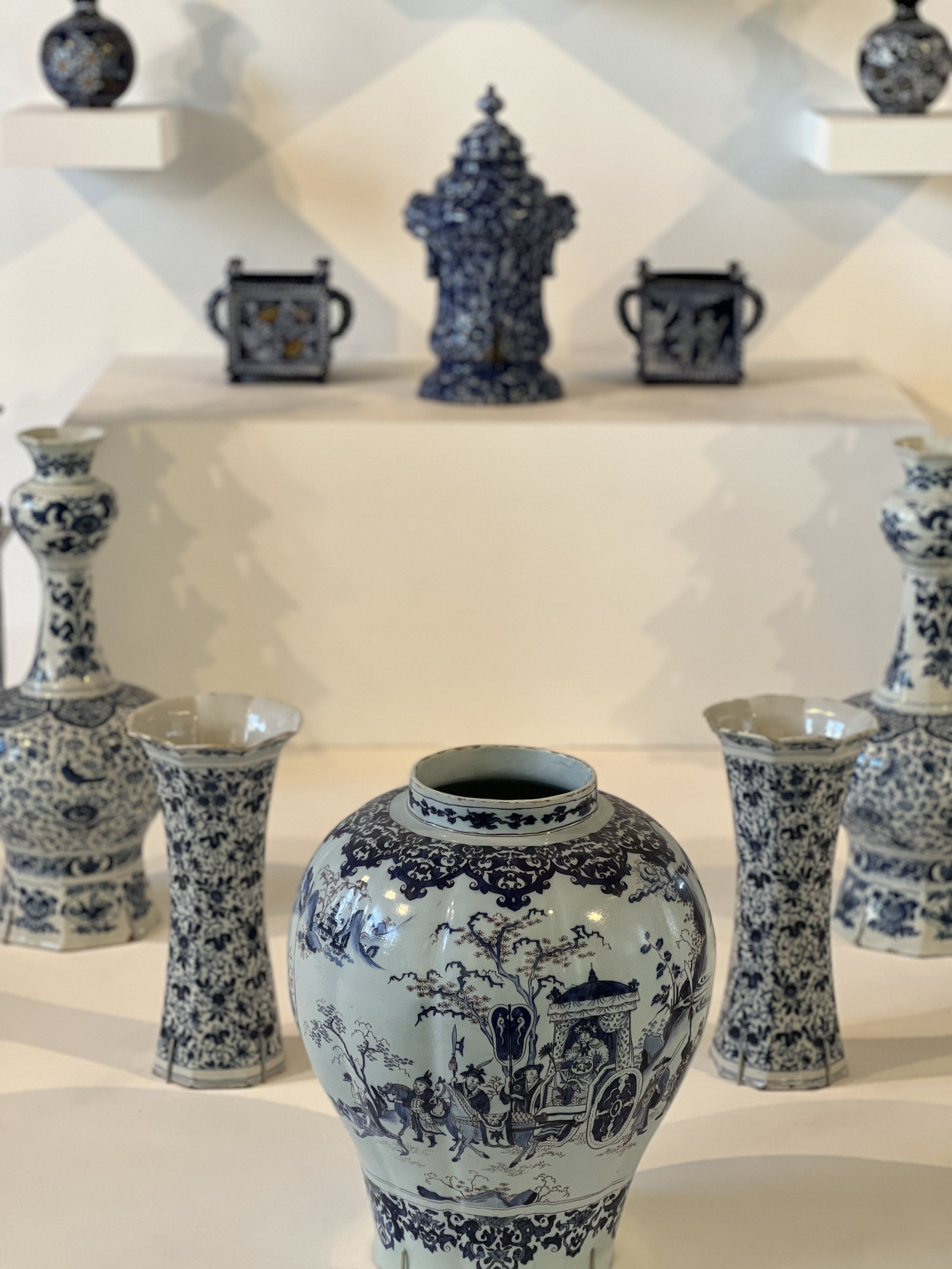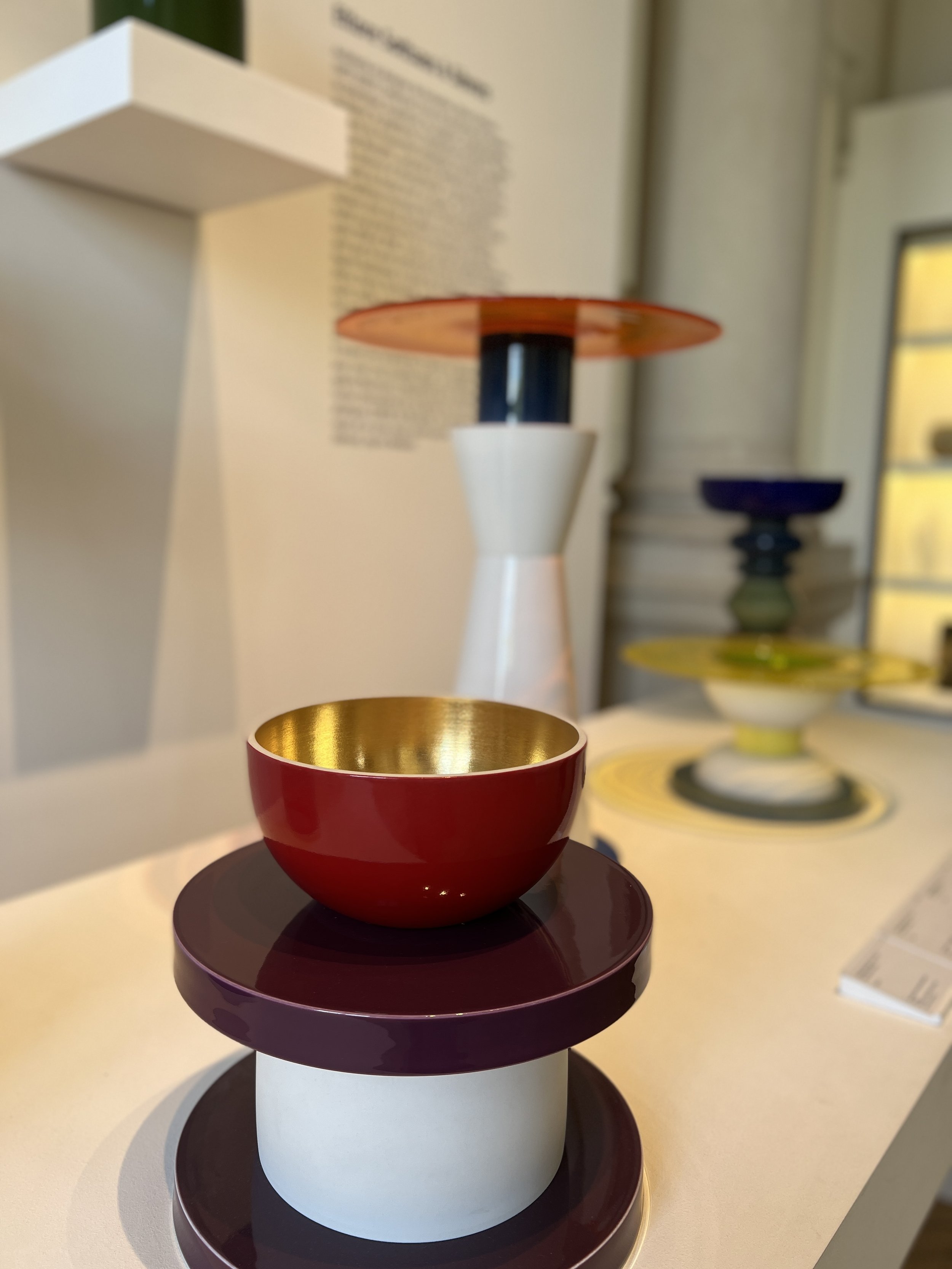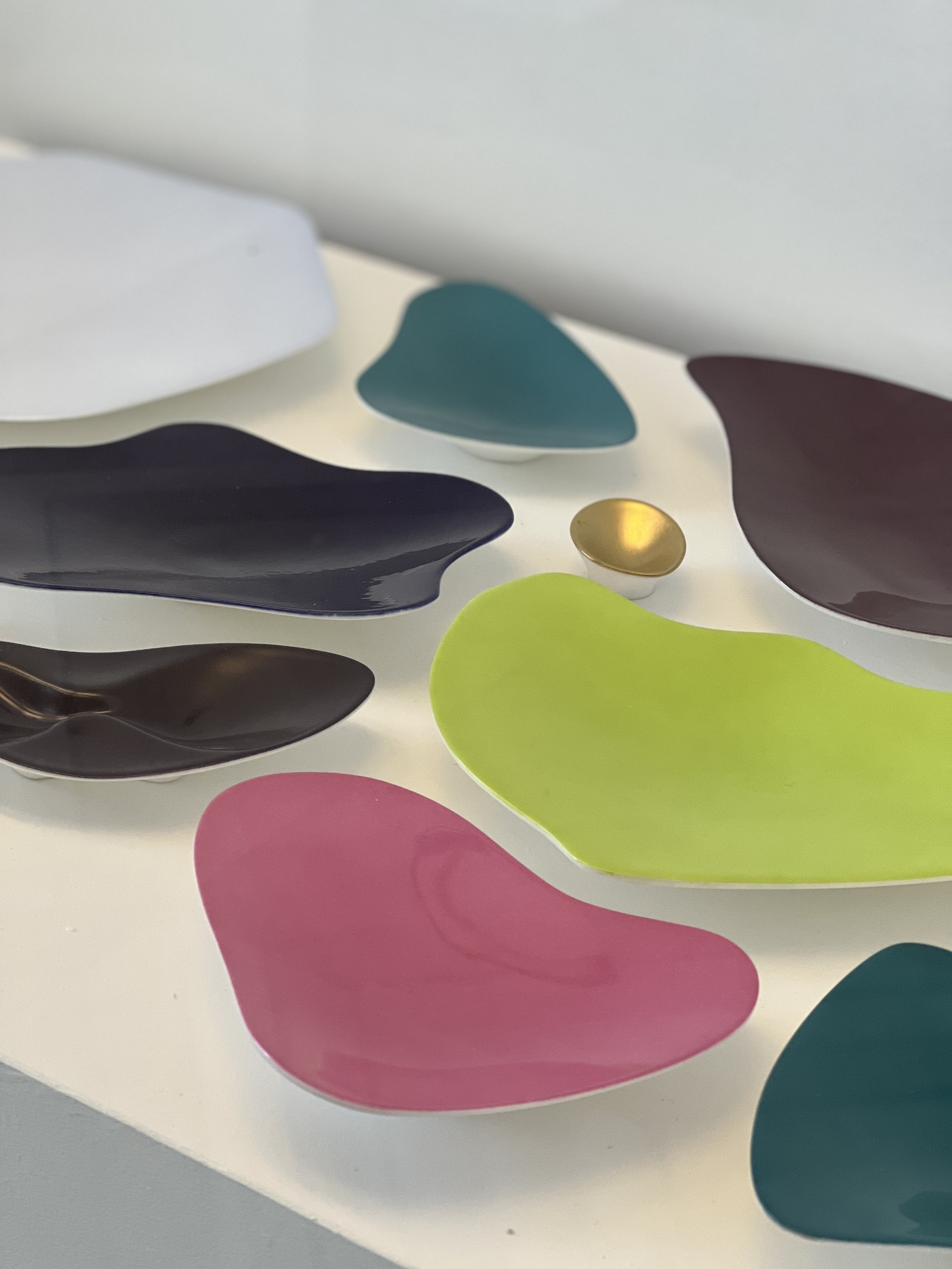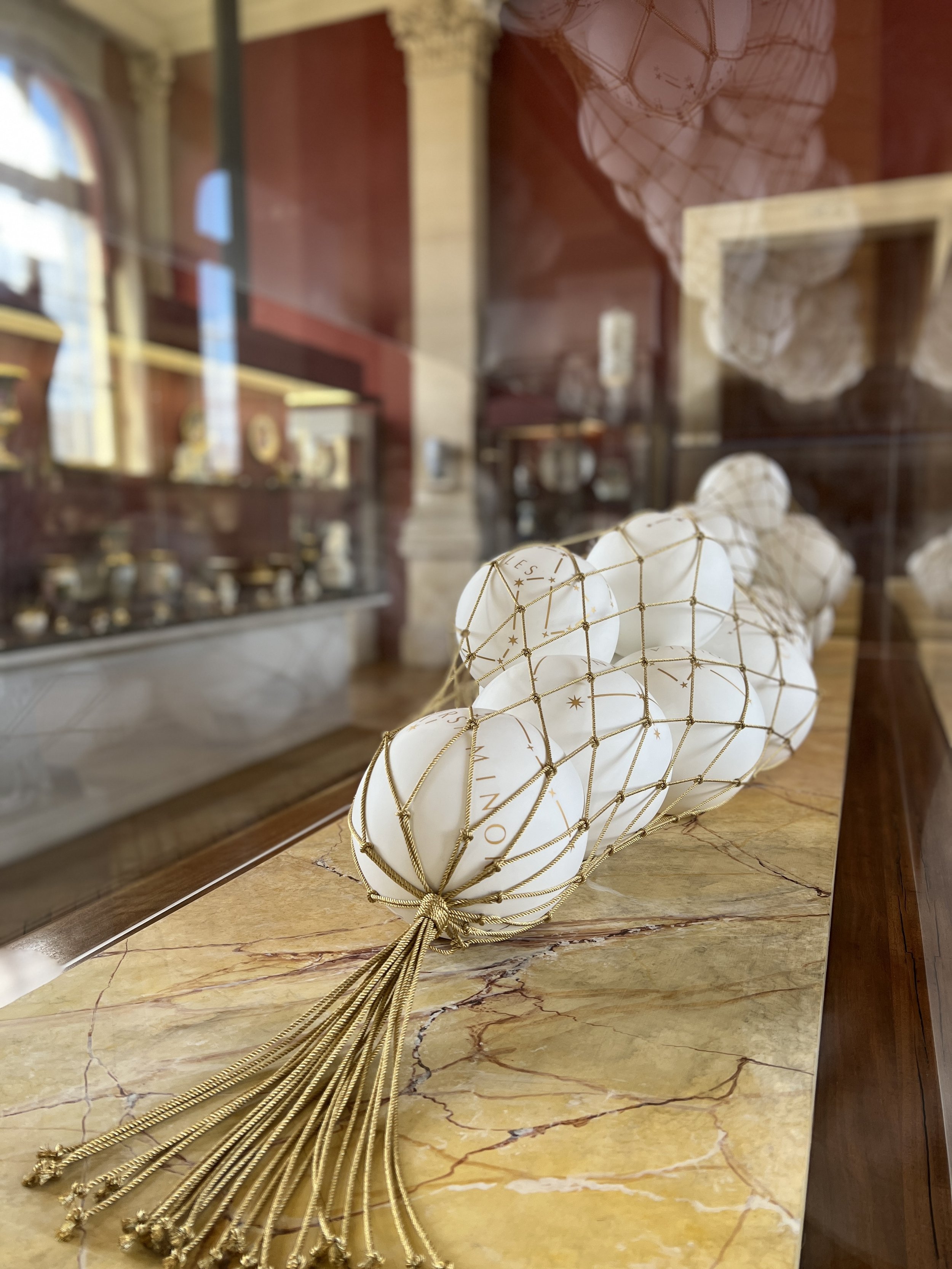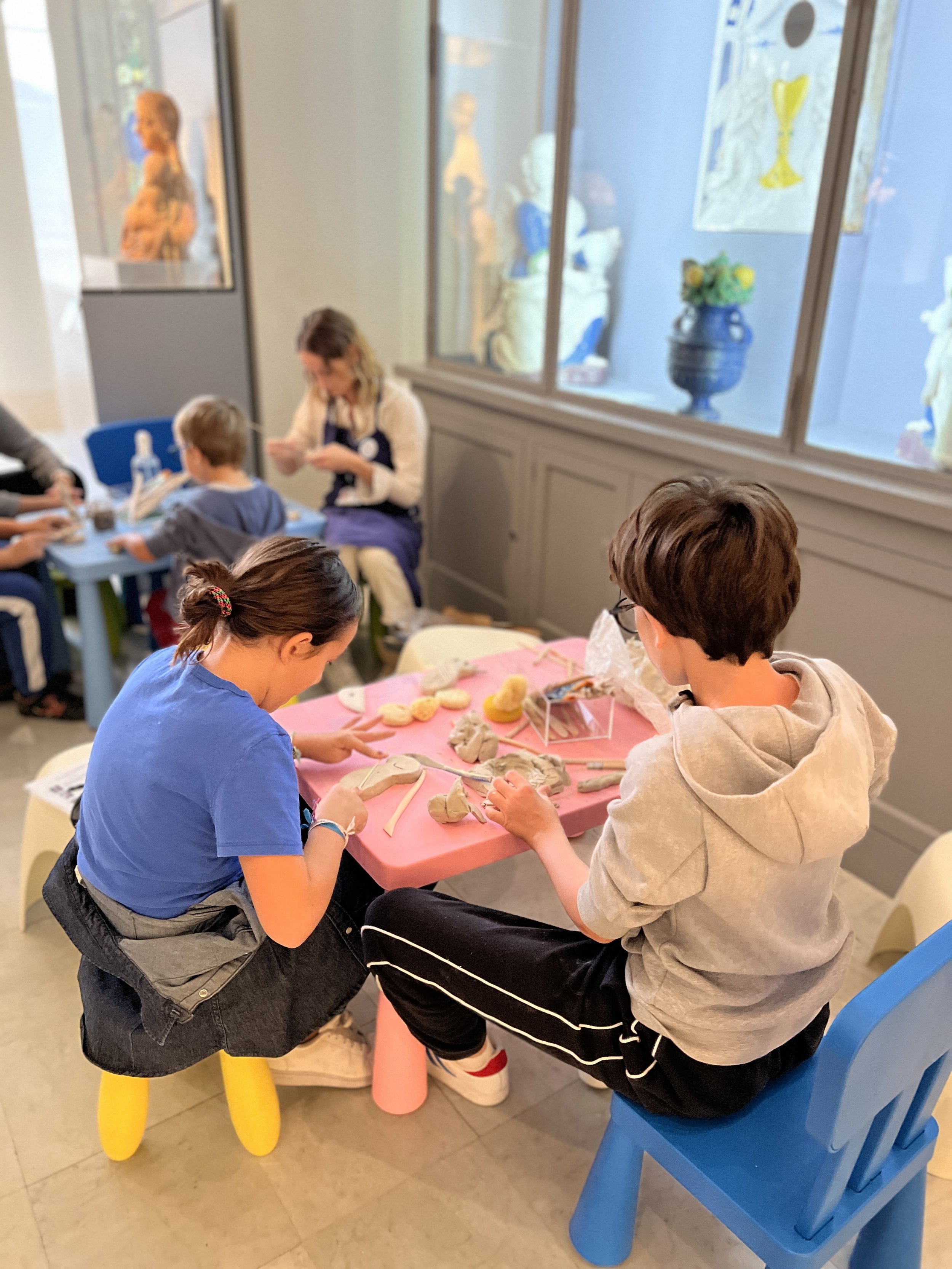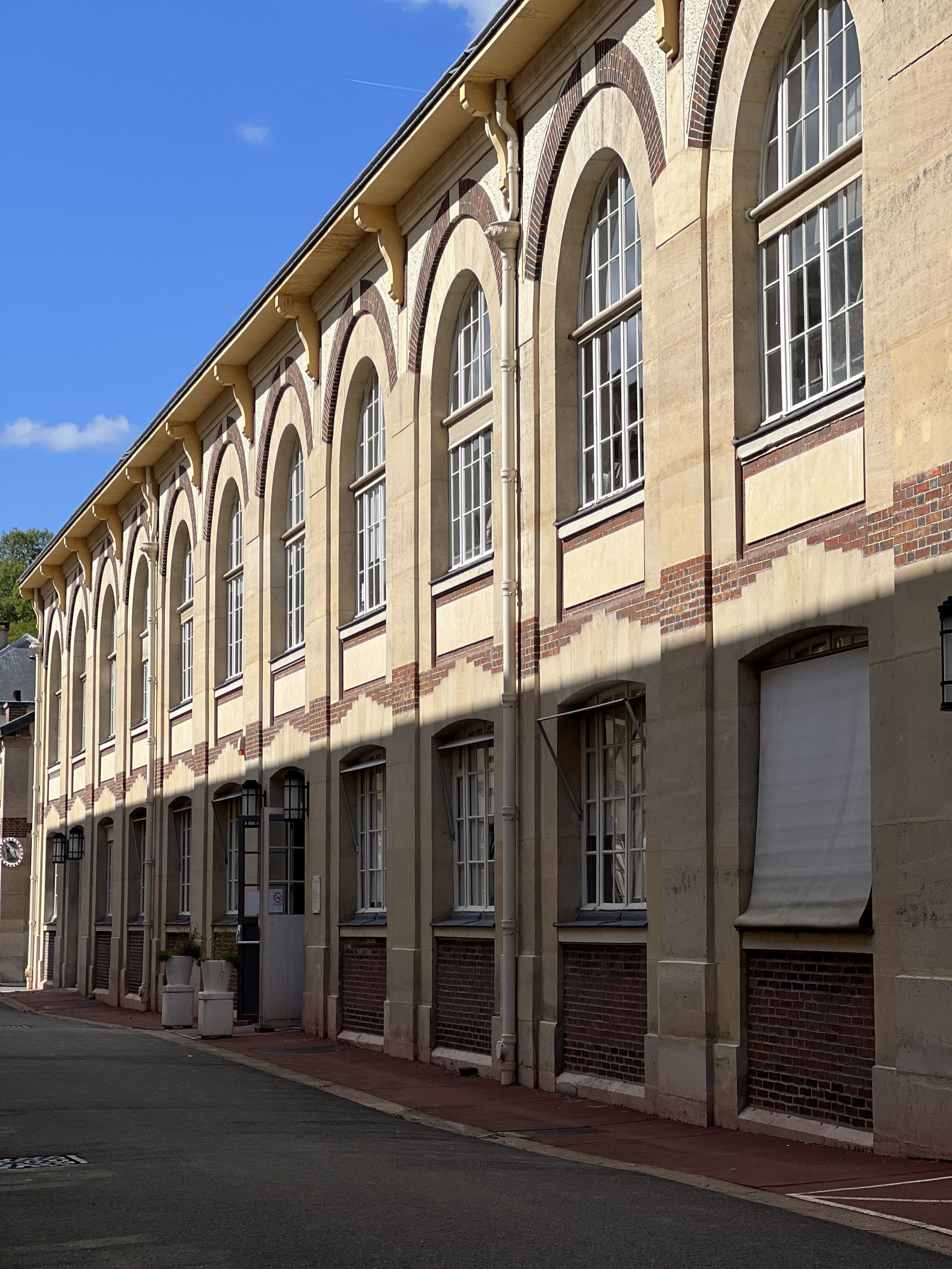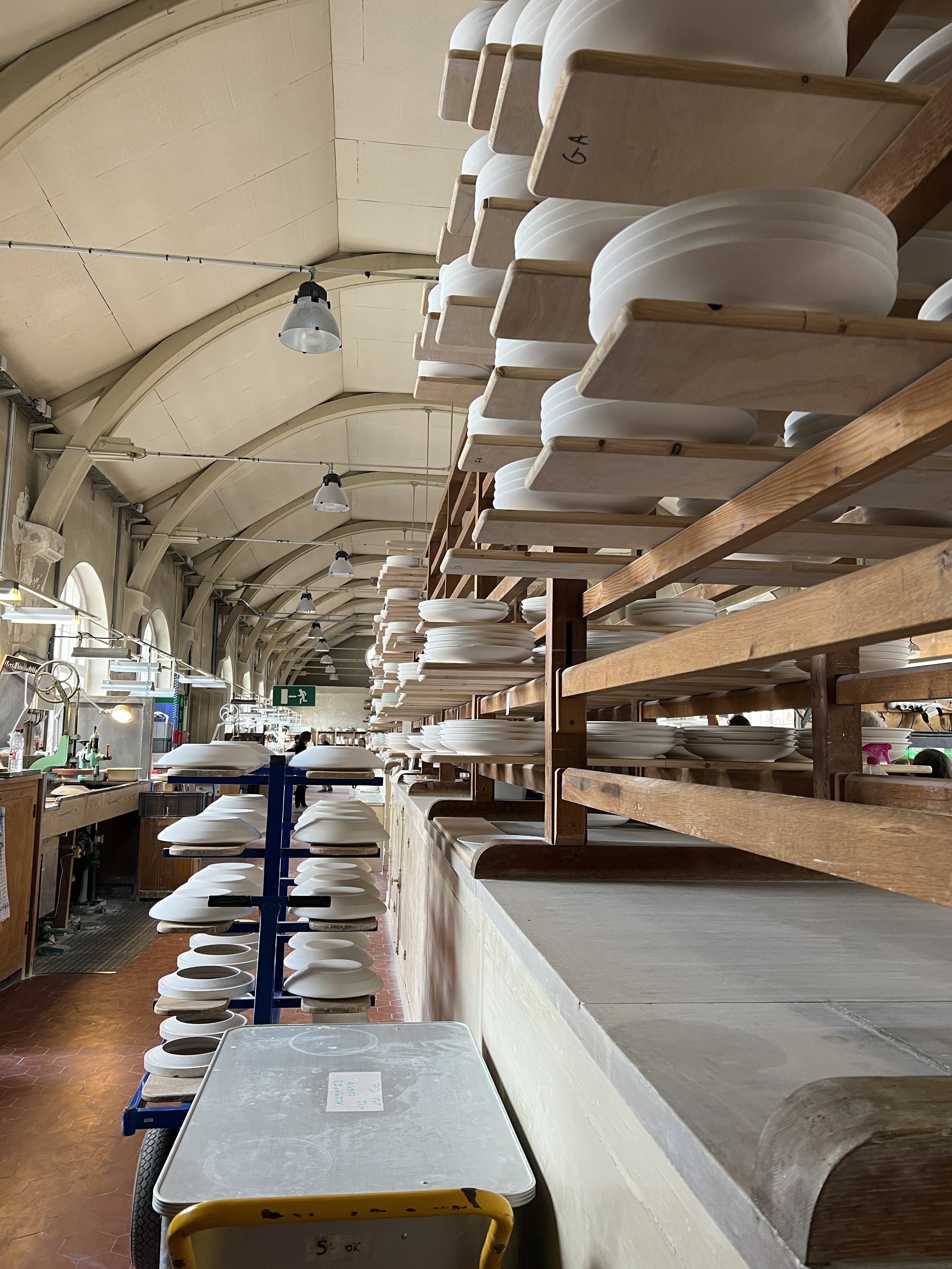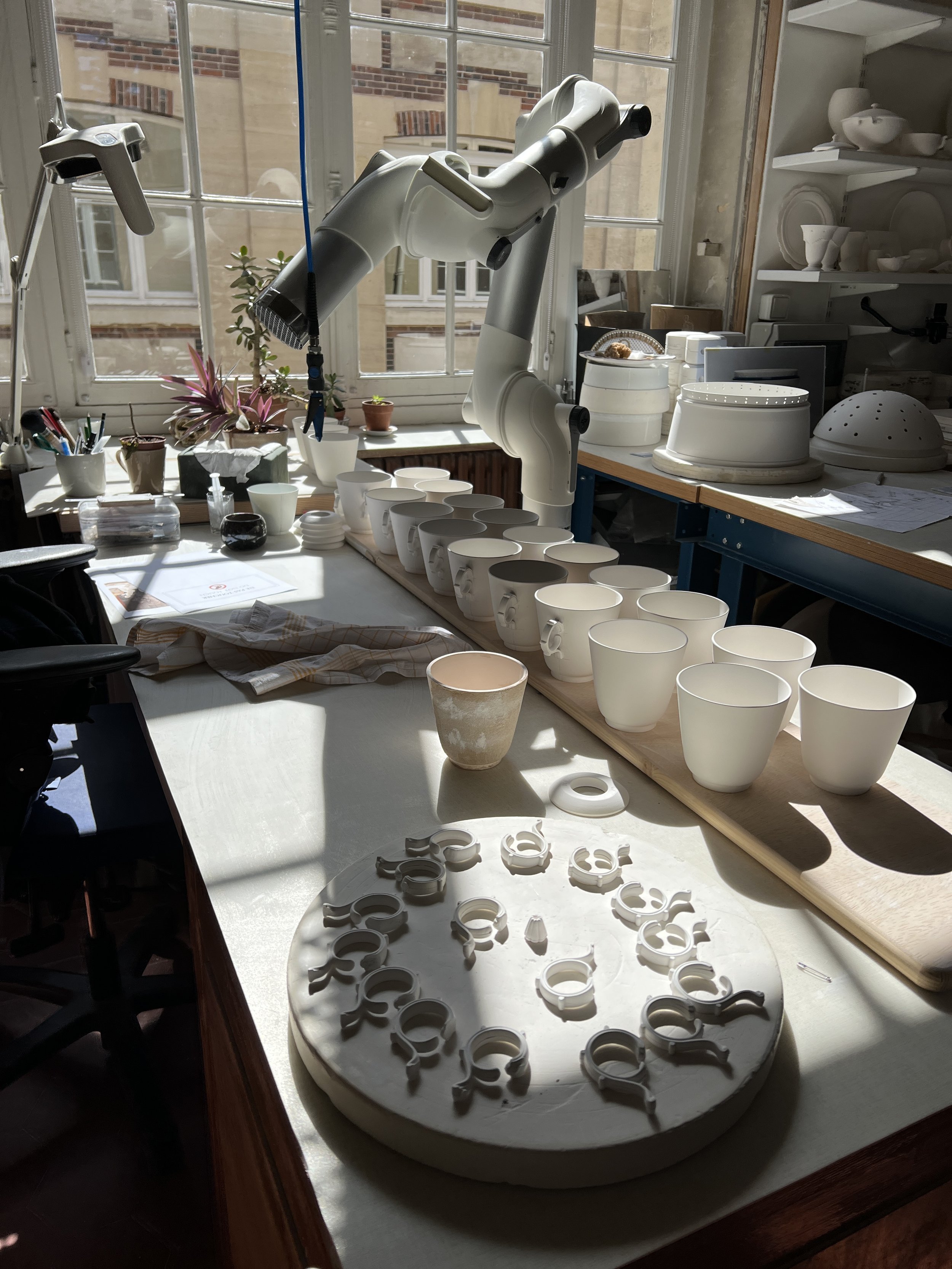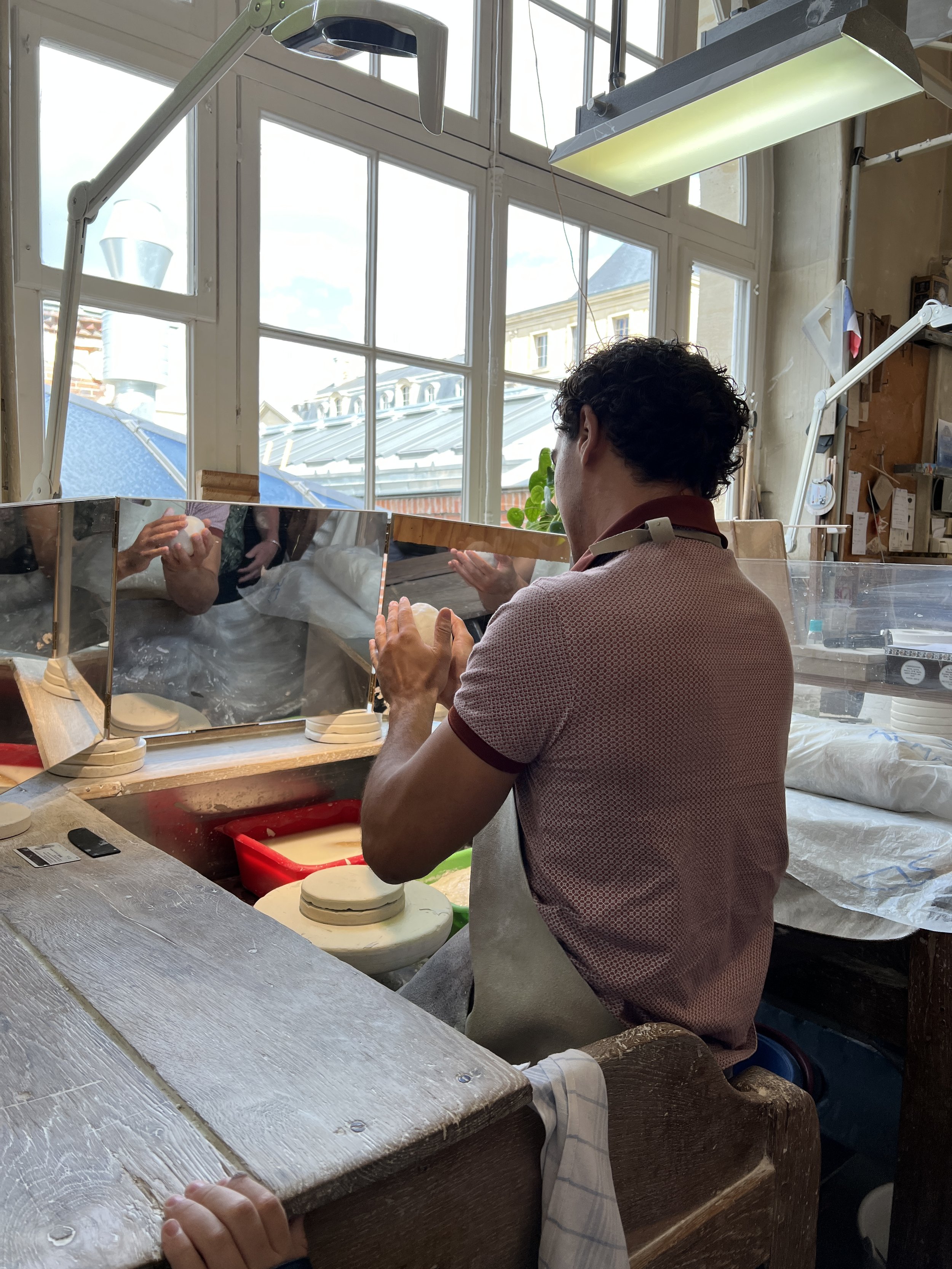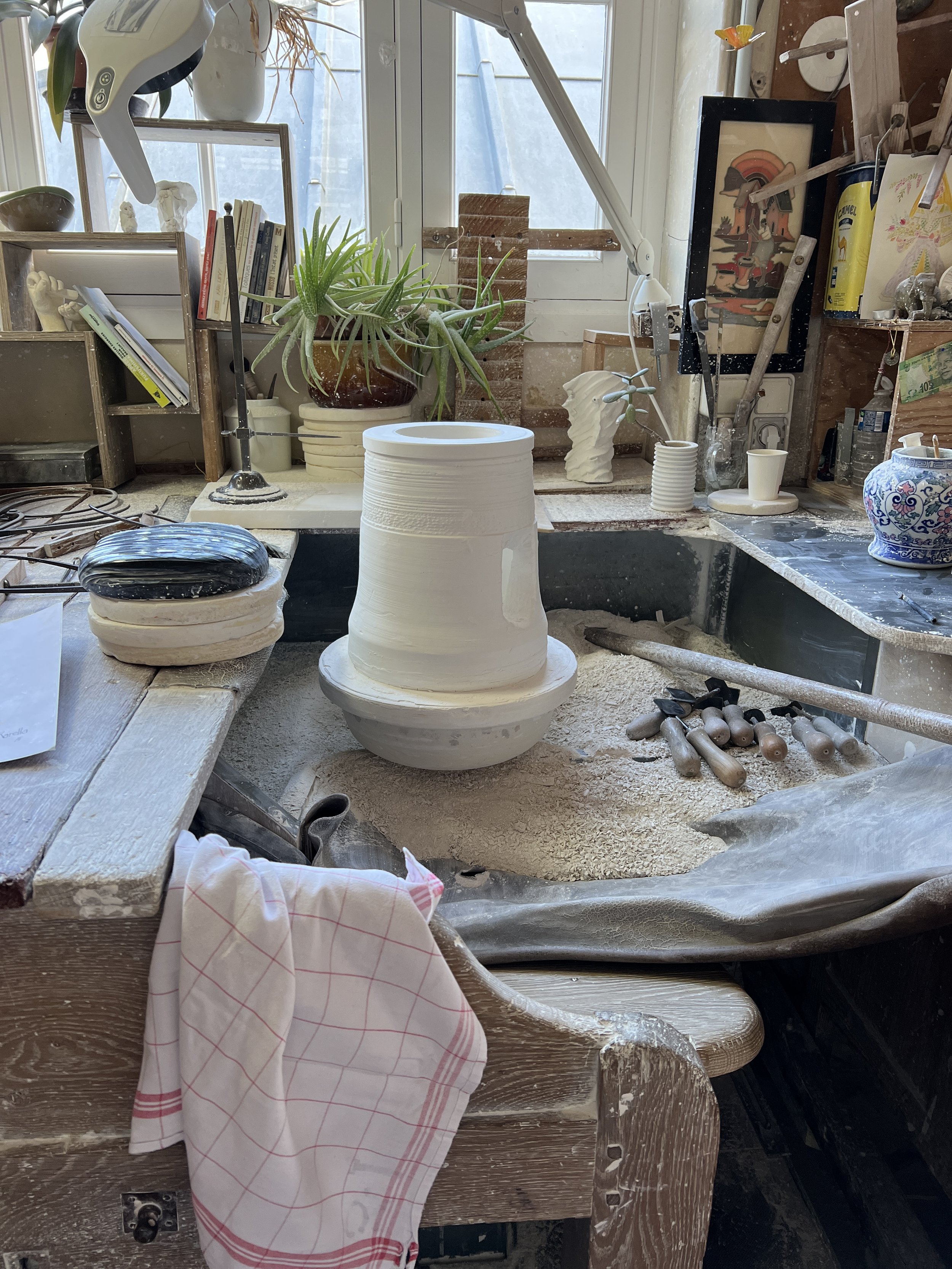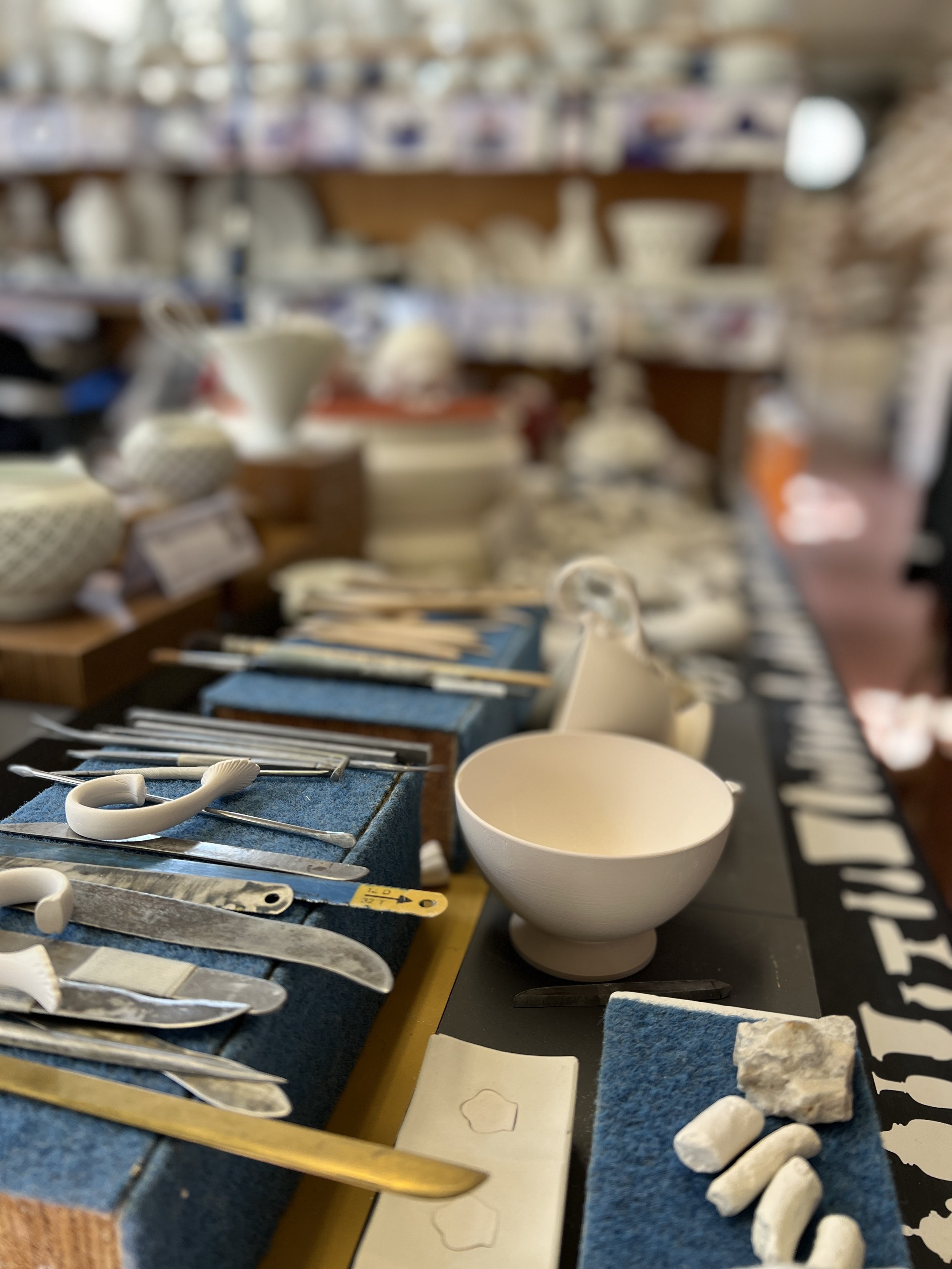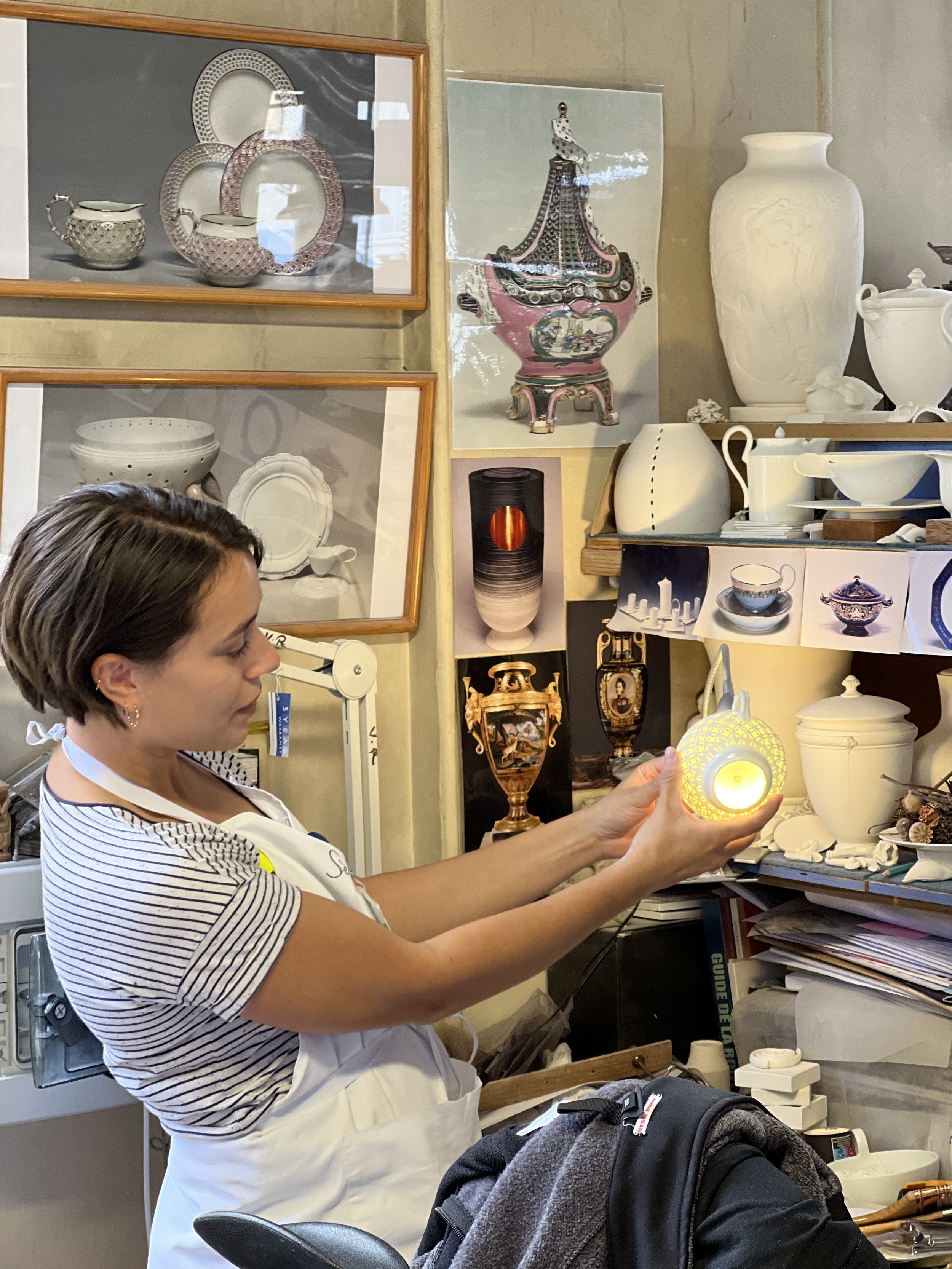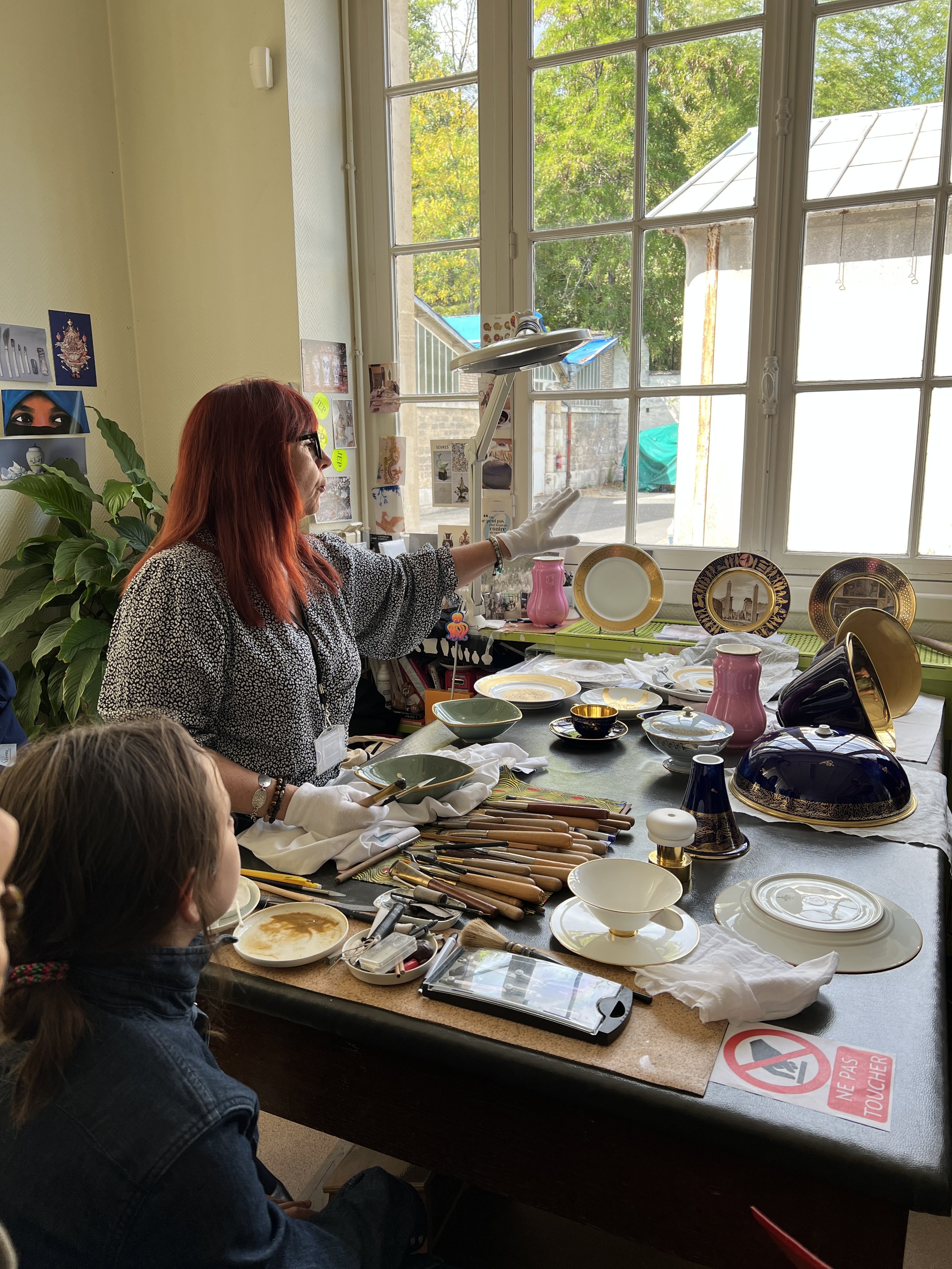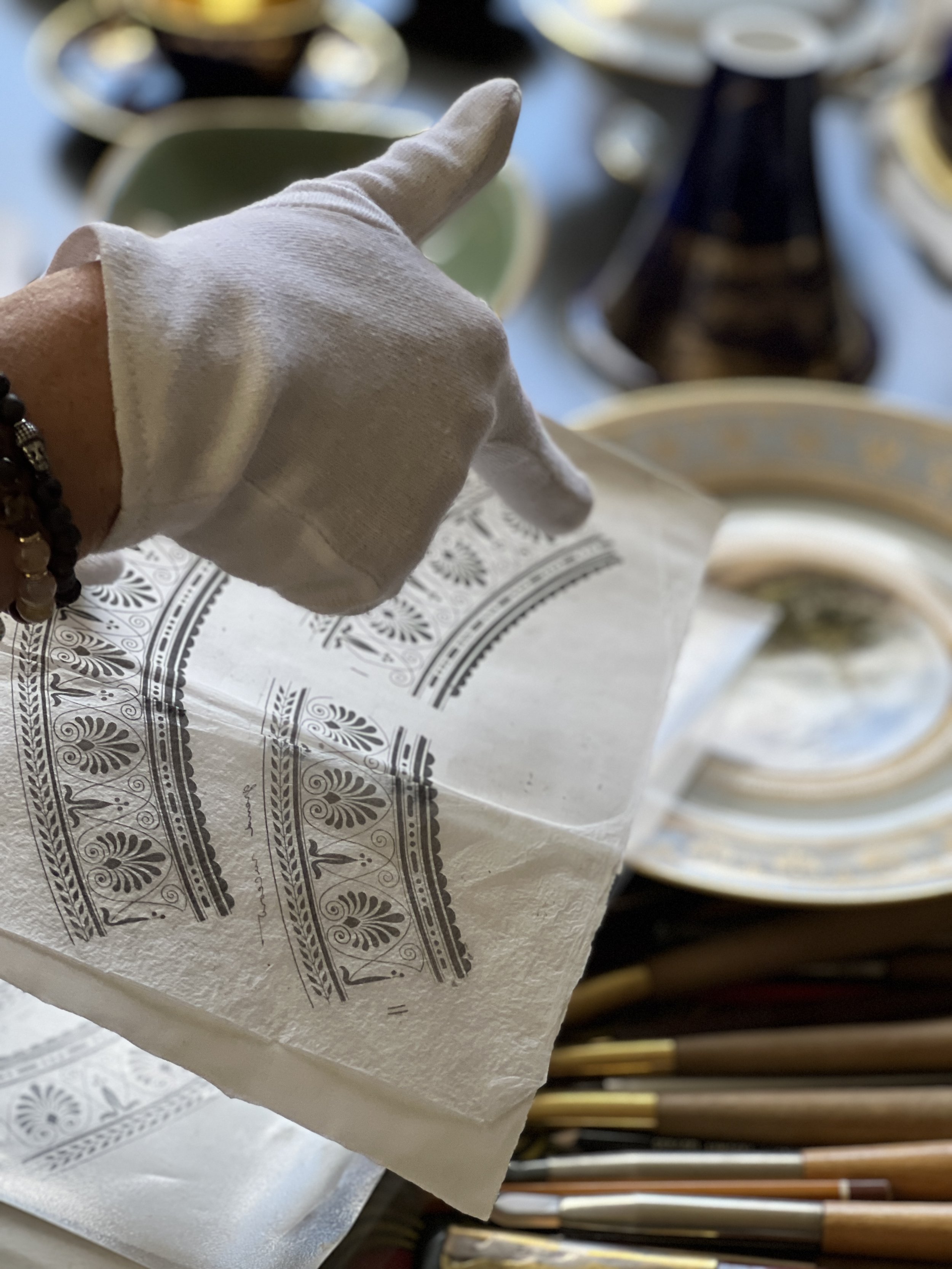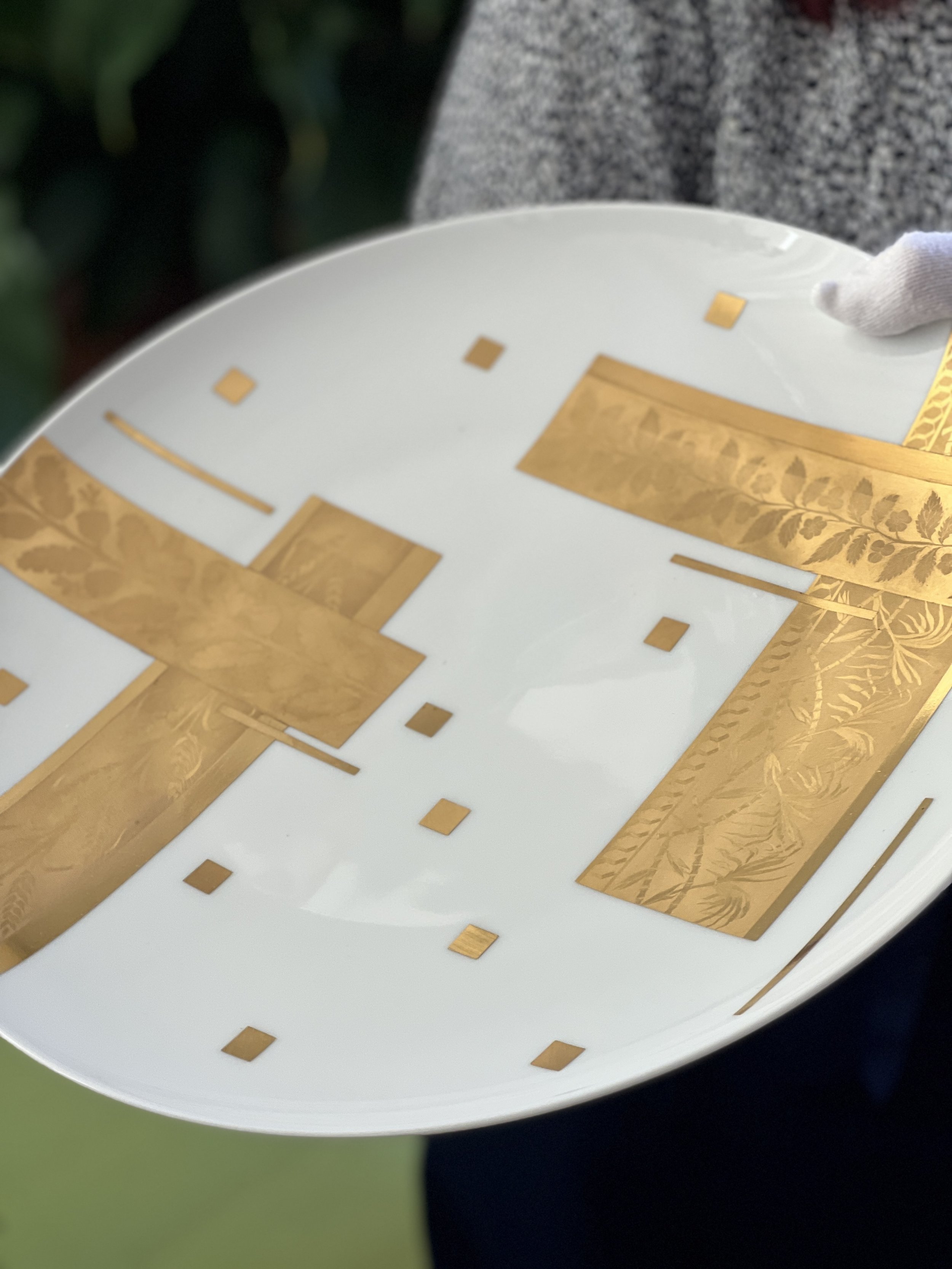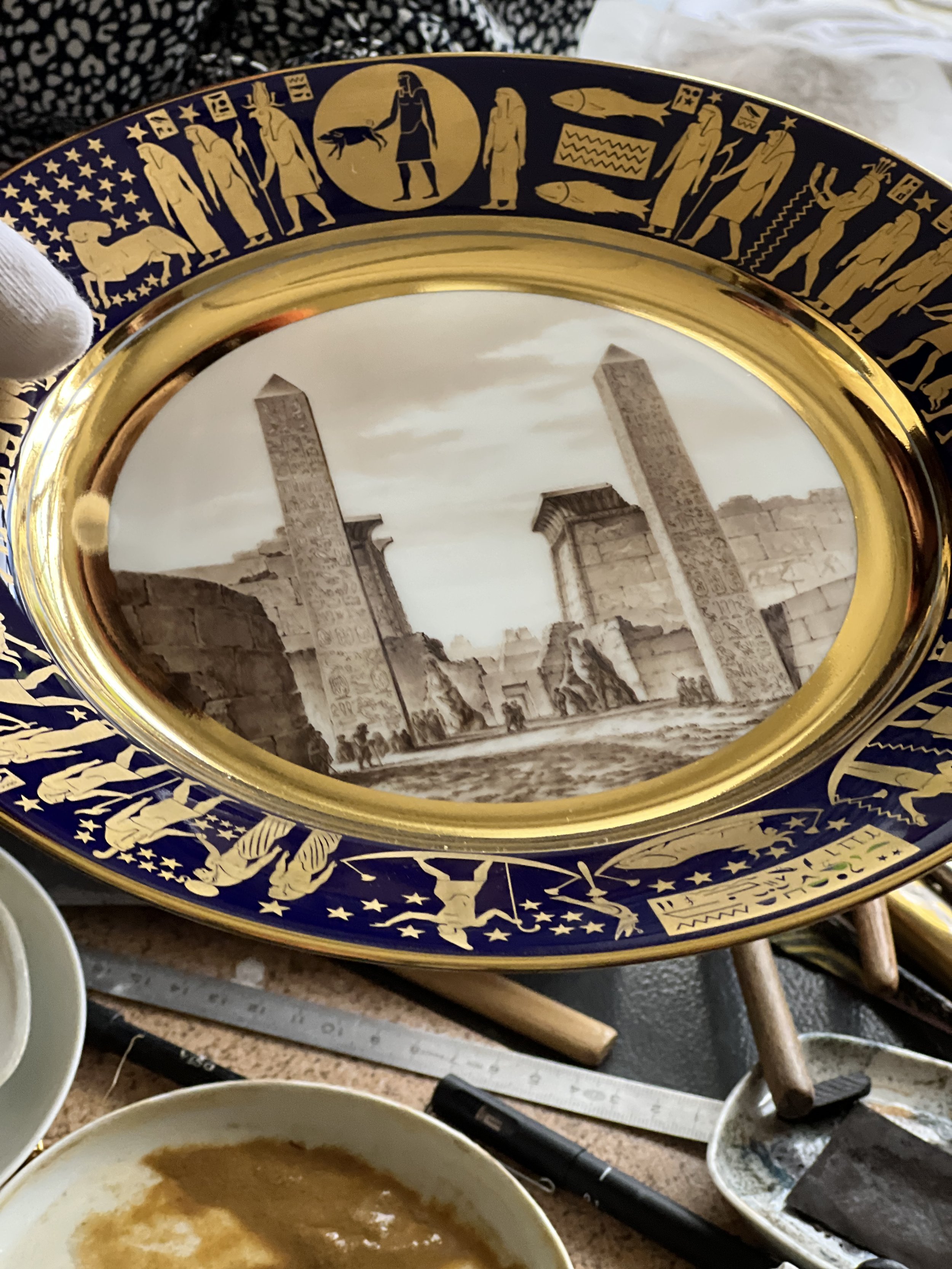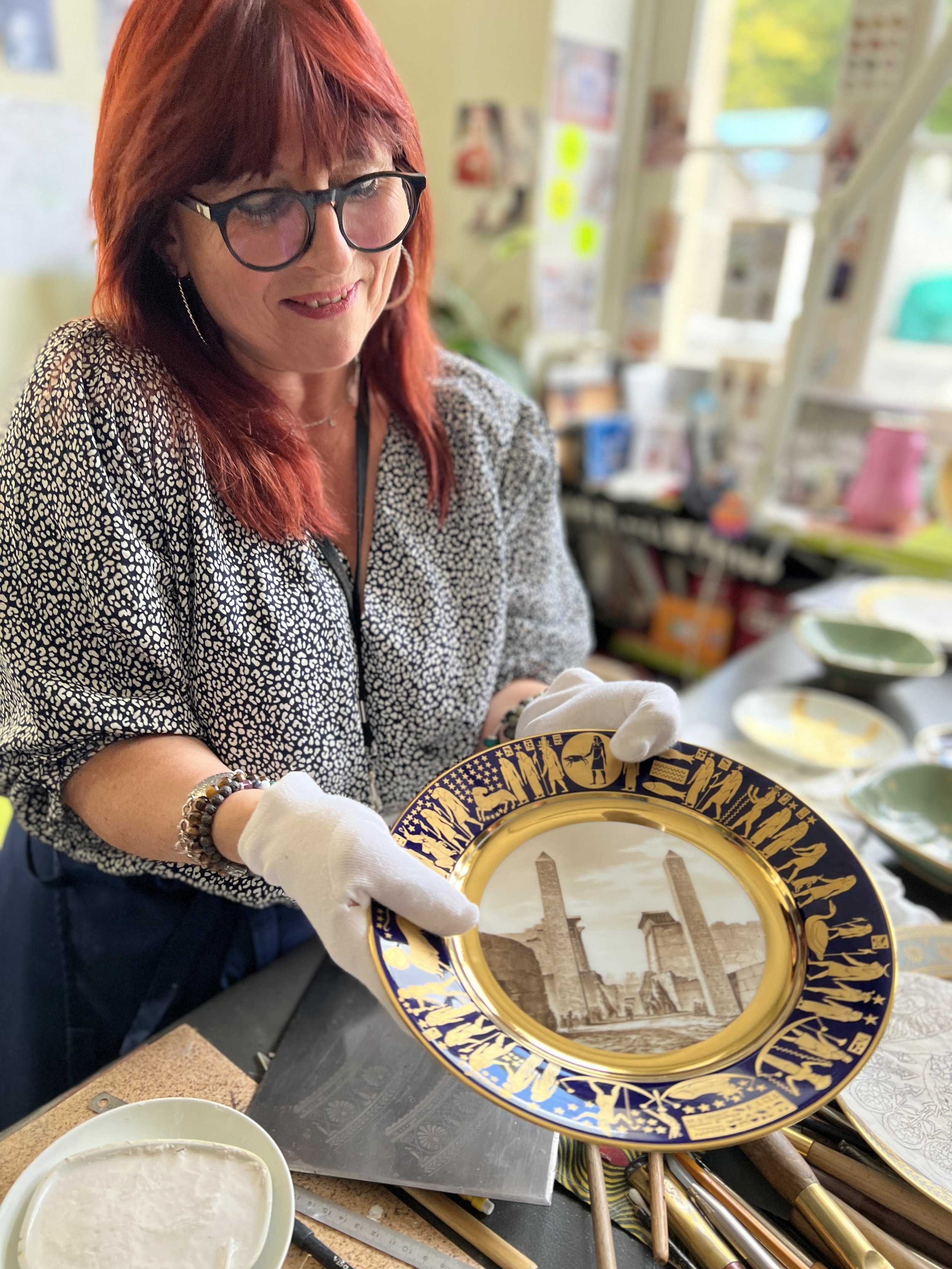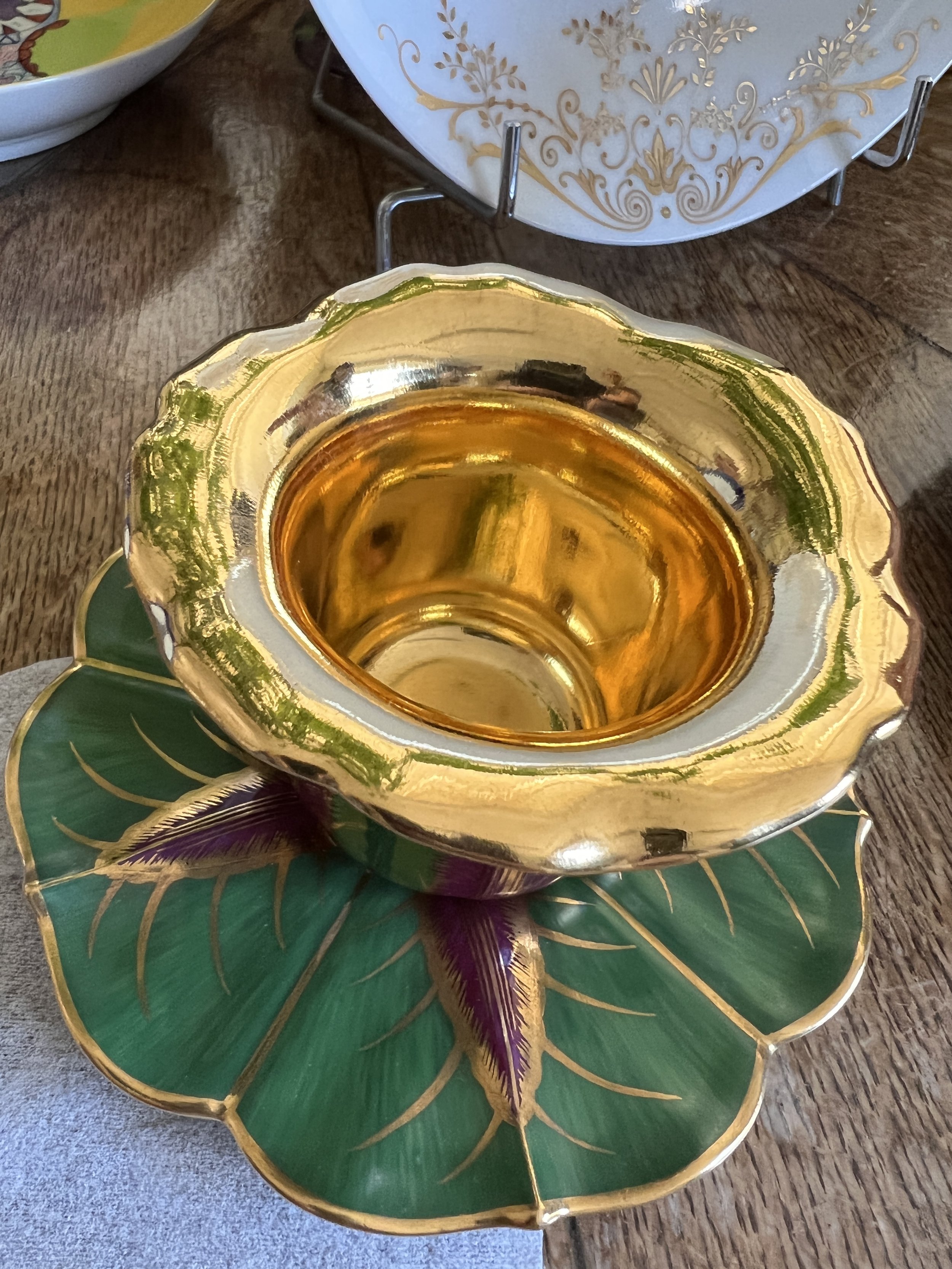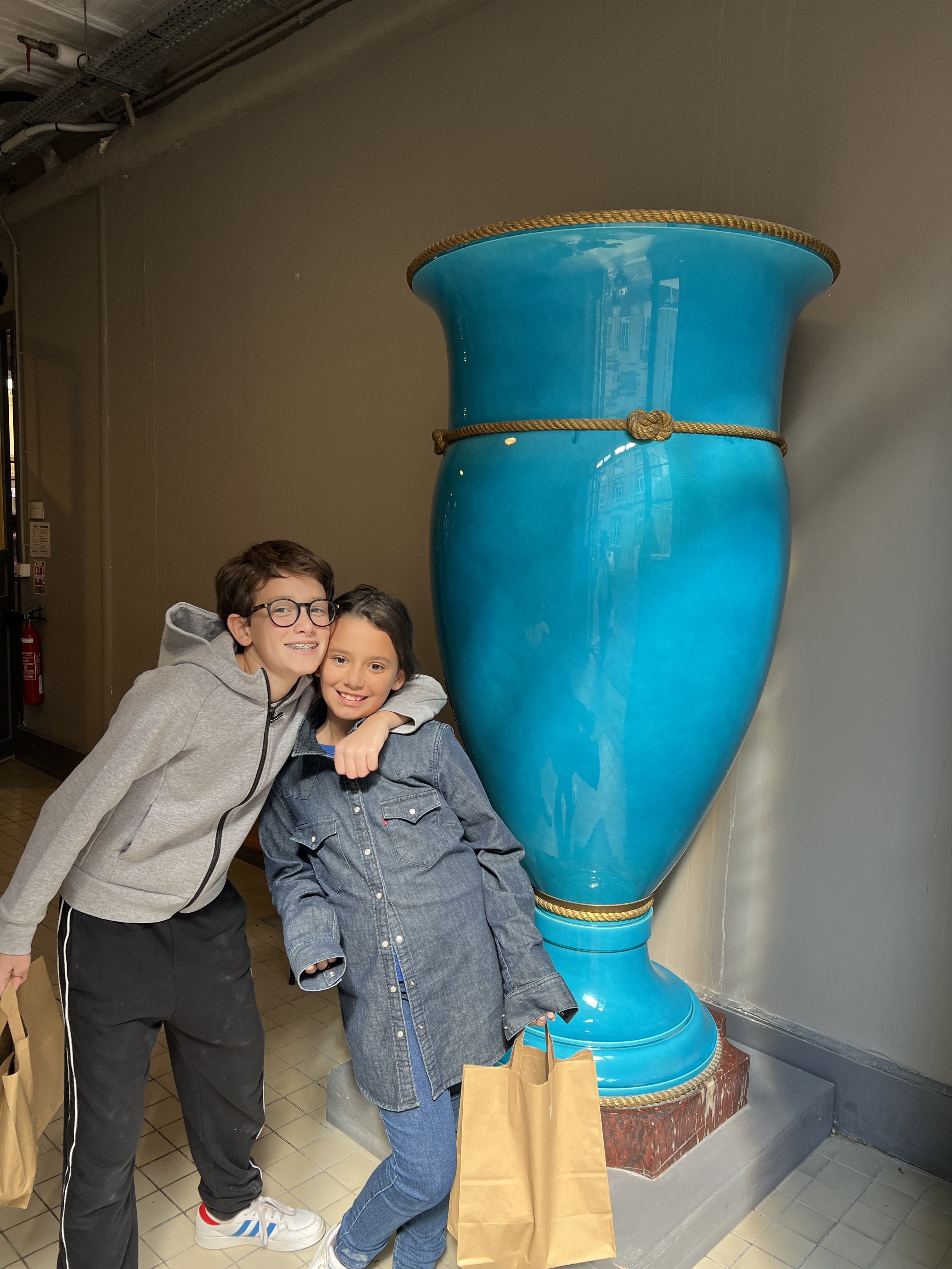Manufacture of Sèvres : the guardian of the french porcelain know-how
Images from the visit to the Musée da la Céramique
This past weekend the Journées Européennes du Patrimoine happened, an opportunity to visit museums, monuments, and castles all over France. The public was able to visit places that were open on an exceptional occasion, such as the National Assembly or the Senate. There are numerous activities such as exhibitions, workshops, animations for children and unusual tours. This year the theme was "Sustainable Heritage" and we chose to visit the Museum and Manufacture of Sèvres, which is close to our house. It was a wonderful experience. The children had a modeling workshop, a treasure hunt through the museum's collection and we were able to participate in an amazing guided tour of the workshops. Founded under the reign of Louis XV in 1740 and under the influence of Madame de Pompadour, the workshops of the Manufacture of Sèvres produce works of art in porcelain, both utilitarian and ornamental pieces, and is the official supplier of the French state. There are 120 potters who have mastered the nearly thirty production processes to perfection for nearly three centuries.
Of the many innovations created in the workshops, the most famous are "biscuit" and Sèvres blue. Biscuit is used to make small ornamental porcelain statuettes without glaze, with a frosted, opaque appearance that looks as if made of sugar. And Bleu de Sèvres is an intense blue glaze that, depending on the amount of layers applied, can result in more intense colors, a deep blue or lighter shades.
We had the opportunity to visit some of these production workshops: tournage, découpage-garnissage, and brunissage. The tournage is where the shapes, such as plates, vases and cups, are created using the lathe, and the precision of the gestures is essential! The découpage-garnissage is where elements such as cup handles or teapot spouts, flowers and other decorations are created and added to the main shape. It was this workshop that the children enjoyed the most and even left with small gifts. The last was the brunissage, where the object, plates or vases decorated with gold go through a smoothing phase with tools made of agate and hematite from the gold decoration, in order to return the shine to the pure gold made opaque by the firing. Depending on the complexity, an object can take up to 9 weeks to complete, and production time is counted in minutes! On our visit, the person in charge of this workshop showed us two plates that were each worth about 16,000 Euros.
Once a month, the workshops can be visited and access is simple and easy. Visiting the Manufacture of Sèvres was an old dream that I finally managed to fulfill and transmit the importance of heritage to my children, who left enchanted and me even more inspired to continue my work, since ceramics and the savoir-faire are axes of my artistic research.
Images from the visit of the Manufacture of Sèvres
Sèvres - Manufacture et Musée nationaux
2 Place de la Manufacture
92310 Sèvres
info@sevresciteceramique.fr
Métro ligne 9 : station « Pont de Sèvres » (sortie n°2)
Tramway T2 : station « Musée de Sèvres »
Autobus au pont de Sèvres, arrêt « Musée de Sèvres » : 169, 179, 171, 426
Parking : parkings de la gare du tramway et de l'entrée du Parc de Saint-Cloud.
